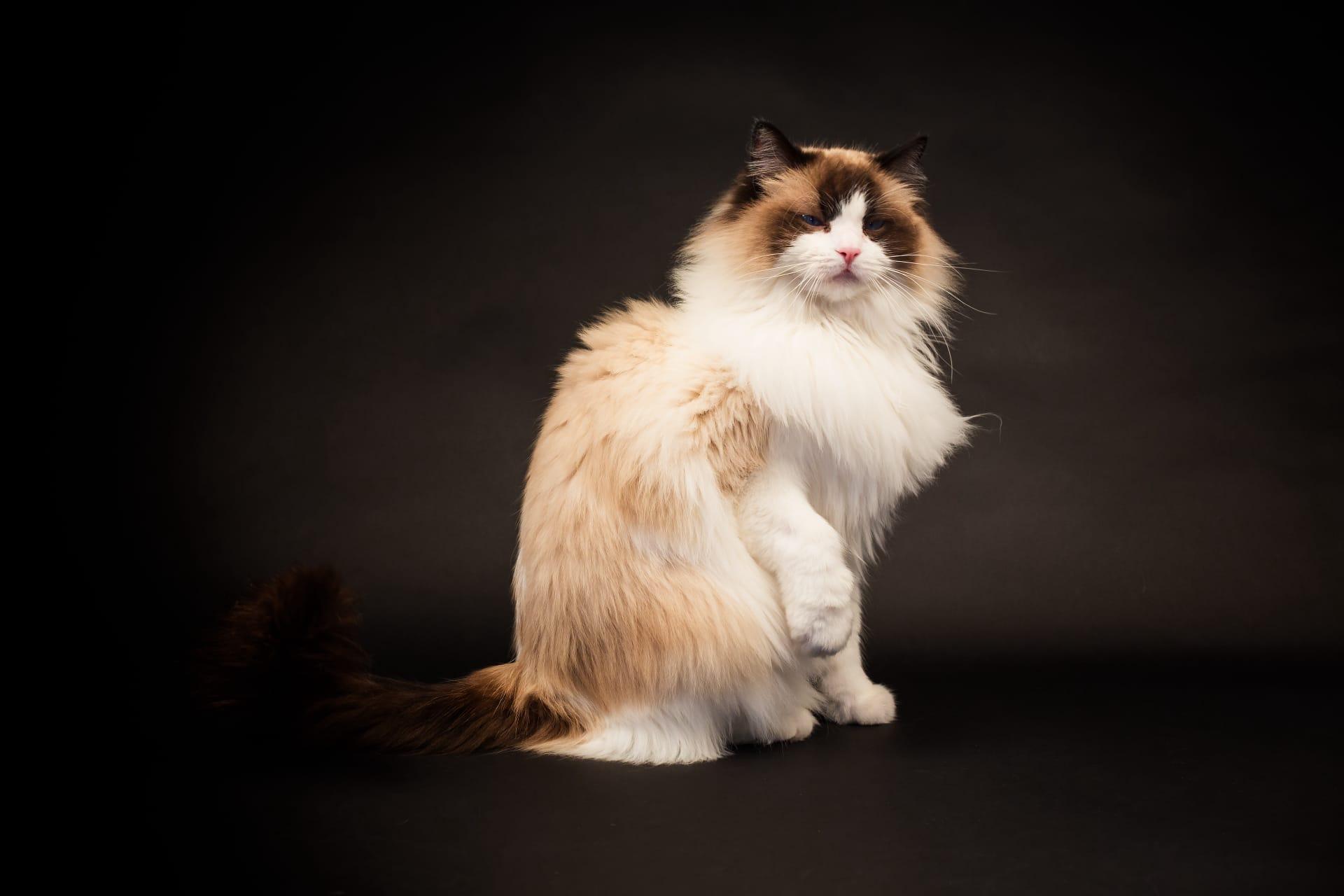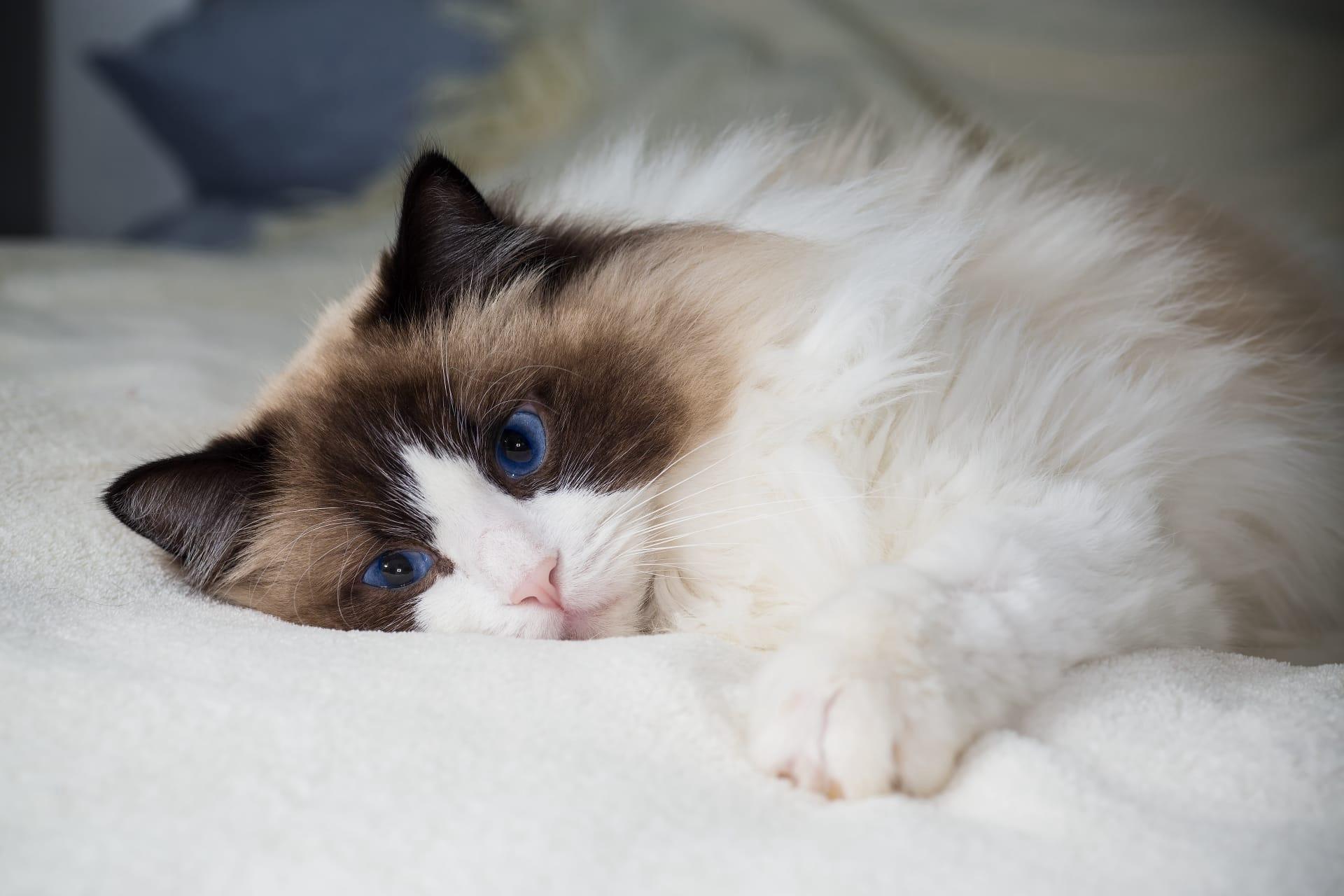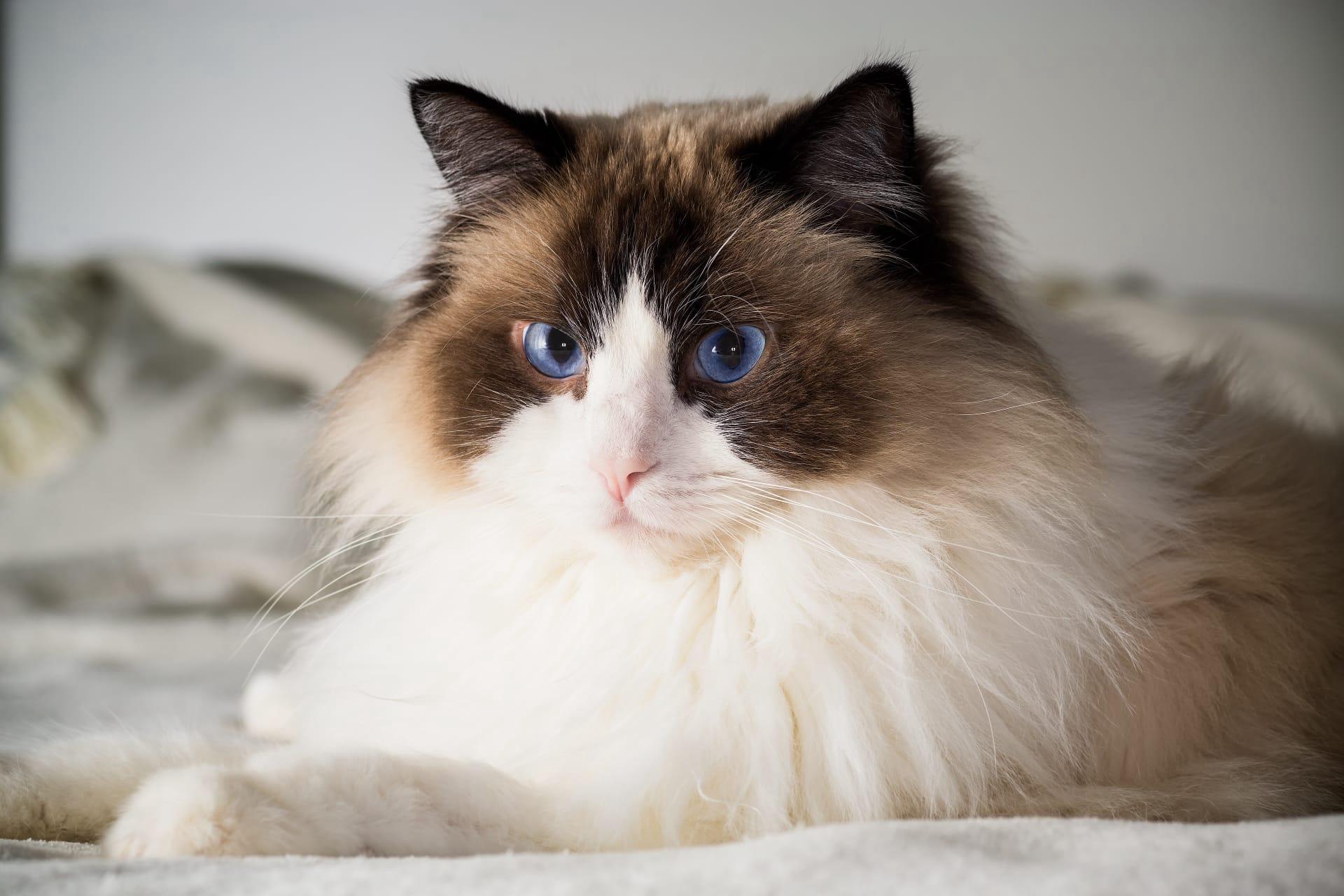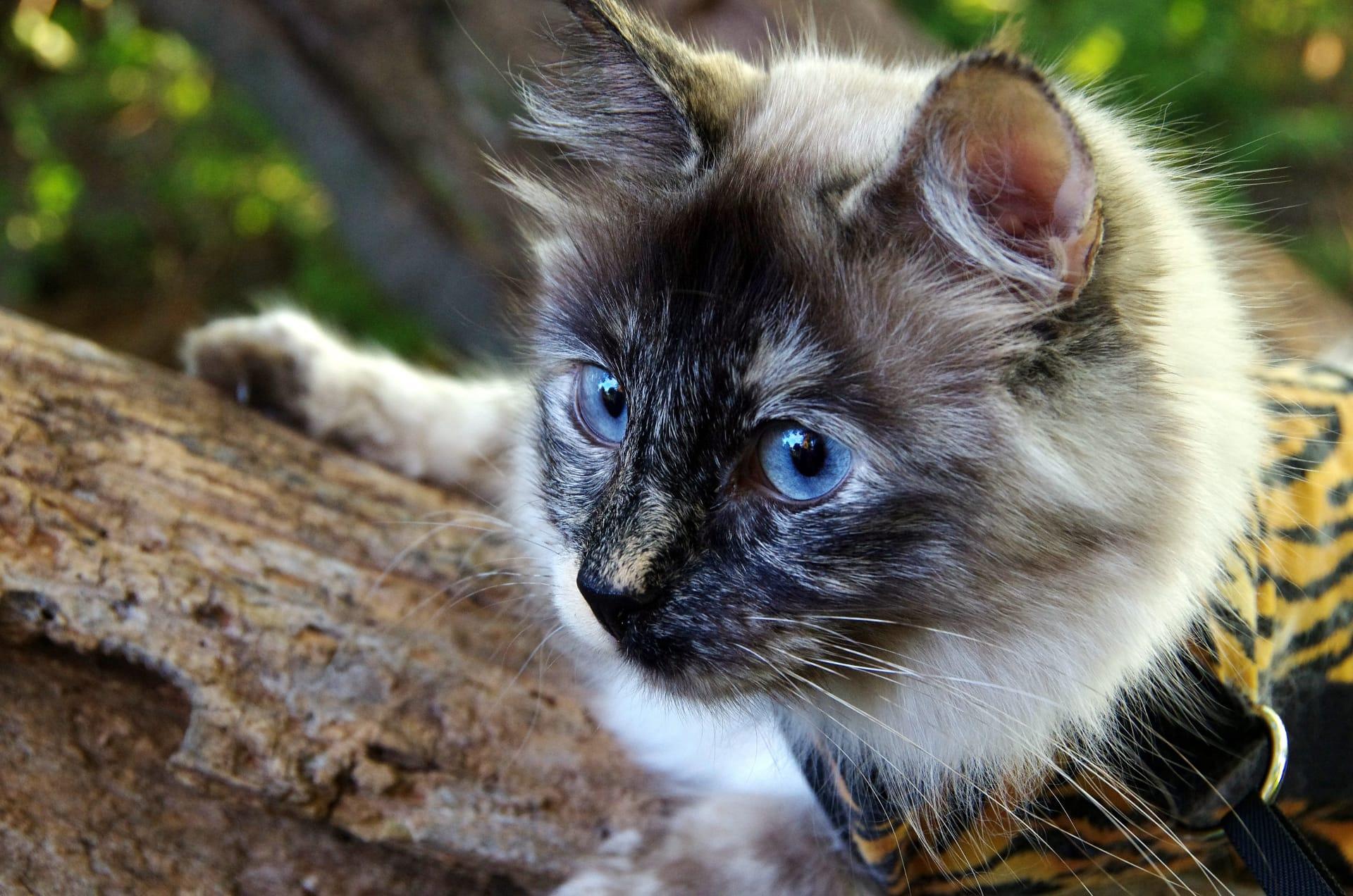Ragdoll Cat
- Home /
- Mini Encyclopedia /
- Animal /
- Ragdoll Cat
1
Ragdoll Cats belong to a mesmerizing breed known for their striking blue eyes and semi-long fur. Scientifically, these felines are categorized within the Felidae family, under the genus Felis, sharing the same classification as other domestic cats, Felis catus. Unique for their color point coat and muscular build, Ragdolls are distinguished by their soft, silky fur and a tendency to go limp when picked up, which contributed to their name. They come in various colors and patterns, including seal, blue, chocolate, and lilac, with color points appearing on their ears, face, paws, and tail.
Originally developed in the 1960s in California, USA, by breeder Ann Baker, Ragdolls have since spread across the globe. Their calm and friendly nature has made them particularly popular in the United States, United Kingdom, and Australia. Due to their sociable disposition, they are often referred to as "dog-like cats," thriving in indoor environments and showing a remarkable affinity for human companionship. Despite their American origins, Ragdolls are now beloved by cat enthusiasts worldwide, with breeders and official clubs established in numerous countries to promote their welfare and breeding standards.

2
A common misconception about Ragdoll Cats is their alleged immunity to pain due to their docile and placid nature. People often mistakenly believe that Ragdolls do not feel pain in the same way other cats do, which has led to some neglect regarding their health and wellbeing.
This belief is entirely unfounded and scientifically inaccurate. Ragdoll Cats, like all other breeds, possess a normal nervous system and are fully capable of feeling pain. Their laid-back personality and tendency to relax completely when picked up do not in any way indicate a diminished capacity for pain perception. It's crucial for owners to monitor their health closely and provide timely veterinary care just as they would for any other pet.

3
Ragdoll Cats form deep bonds with their human families, often following their owners from room to room and participating in daily activities. They are known for their gentle temperament and friendly disposition, making them excellent companions, especially for families with children and other pets. Their need for interaction and affection means they thrive best in environments where they receive plenty of attention and are not left alone for long periods.
Moreover, Ragdolls have a unique way of communicating with their human counterparts, using a soft voice to indicate their needs or desires. They are not overly demanding but appreciate a good cuddle and playtime. Their intelligence and gentle nature also make them easy to train for various tasks, including using a scratching post, playing fetch, and even walking on a leash. This compatibility with human lifestyles has significantly contributed to their popularity as indoor pets.

4
The Ragdoll breed was developed in the early 1960s by Ann Baker, a Persian breeder in Riverside, California. She aimed to create a beautiful cat with a gentle, placid temperament and a striking appearance. The breed originated from a domestic longhair named Josephine and other unknown male Birman or Burmese-like cats. The resulting kittens exhibited the desired traits, including large size, gentle demeanor, and a tendency to go limp when held, which led to the name "Ragdoll."
Over the decades, Ragdolls have evolved through careful breeding practices that emphasized health, temperament, and the breed's distinctive look. Breeders have worked to maintain the Ragdoll's gentle nature while also ensuring genetic diversity and robust health. As a result, today's Ragdolls are known for their sociability, intelligence, and adaptability to various home environments, making them one of the most sought-after cat breeds worldwide. The breed has been officially recognized by major feline organizations, and its popularity continues to grow, thanks to its remarkable characteristics and compatibility with family life.

5
Film: "The Wonderful World of Cats - HD Nature Wildlife Documentary" is a notable documentary that, while not exclusively about Ragdoll Cats, features them prominently. Produced in the United Kingdom in the early 2010s, it explores the fascinating lives, history, and various breeds of cats around the world, including the beloved Ragdoll. The documentary delves into their unique traits, the breed's development, and why they are cherished by cat lovers.
Book: "The Ragdoll Cat" by Suzanne Johnson, published in the United States in 2005, offers a comprehensive look into the world of Ragdolls. It covers everything from the breed's history and development to care, health issues, and tips for raising a Ragdoll. Johnson's book is praised for its detailed information and practical advice, making it invaluable for current and prospective Ragdoll owners.
Book: "Ragdolls: A Complete Pet Owner's Manual" by Karen Leigh Davis, released in 2010, also in the United States, is another essential read for anyone interested in this breed. Davis provides insight into the Ragdoll's personality, behavioral traits, and how to care for them, including their dietary needs, grooming, and health care. This book serves as a thorough guide for nurturing a healthy, happy Ragdoll cat.